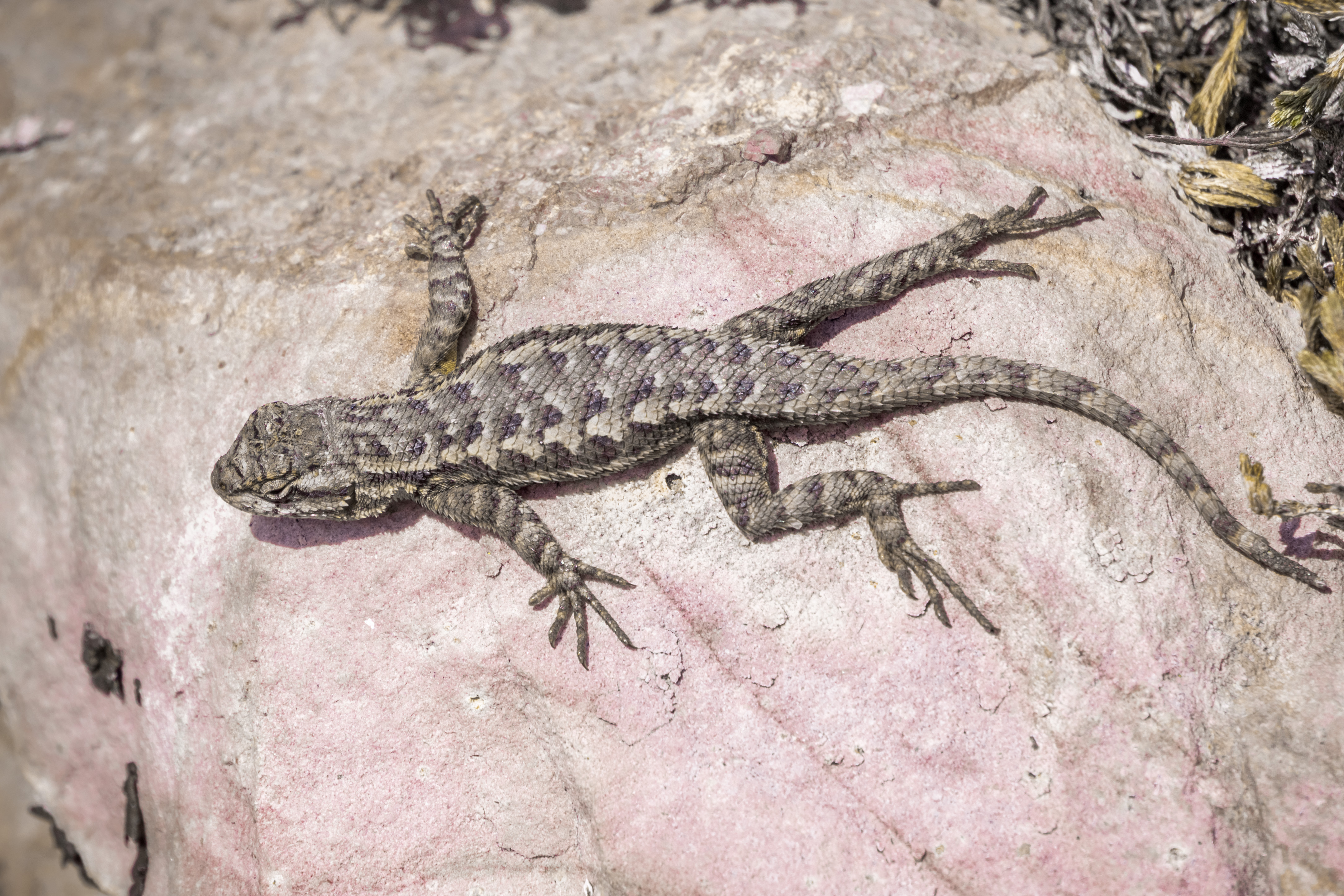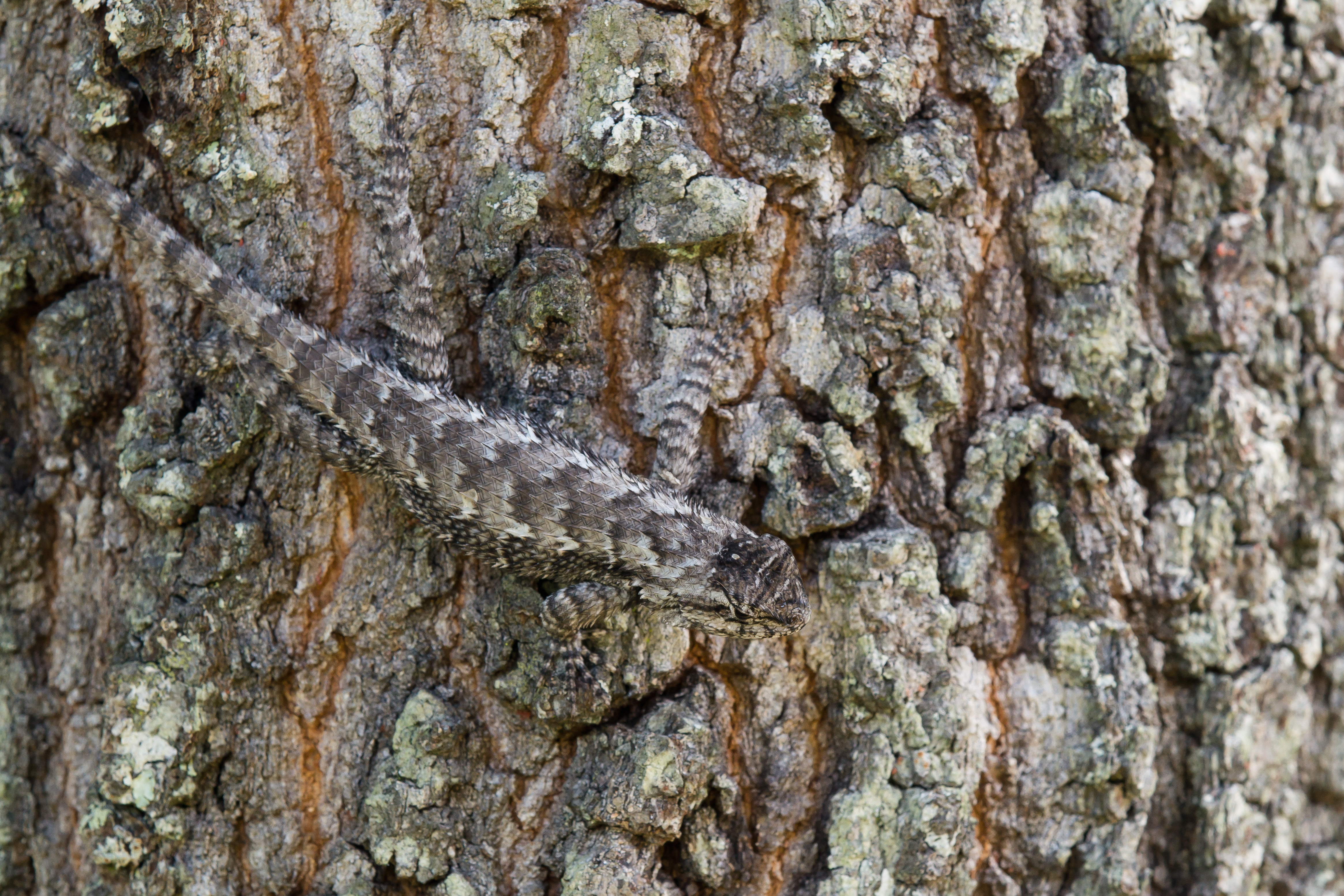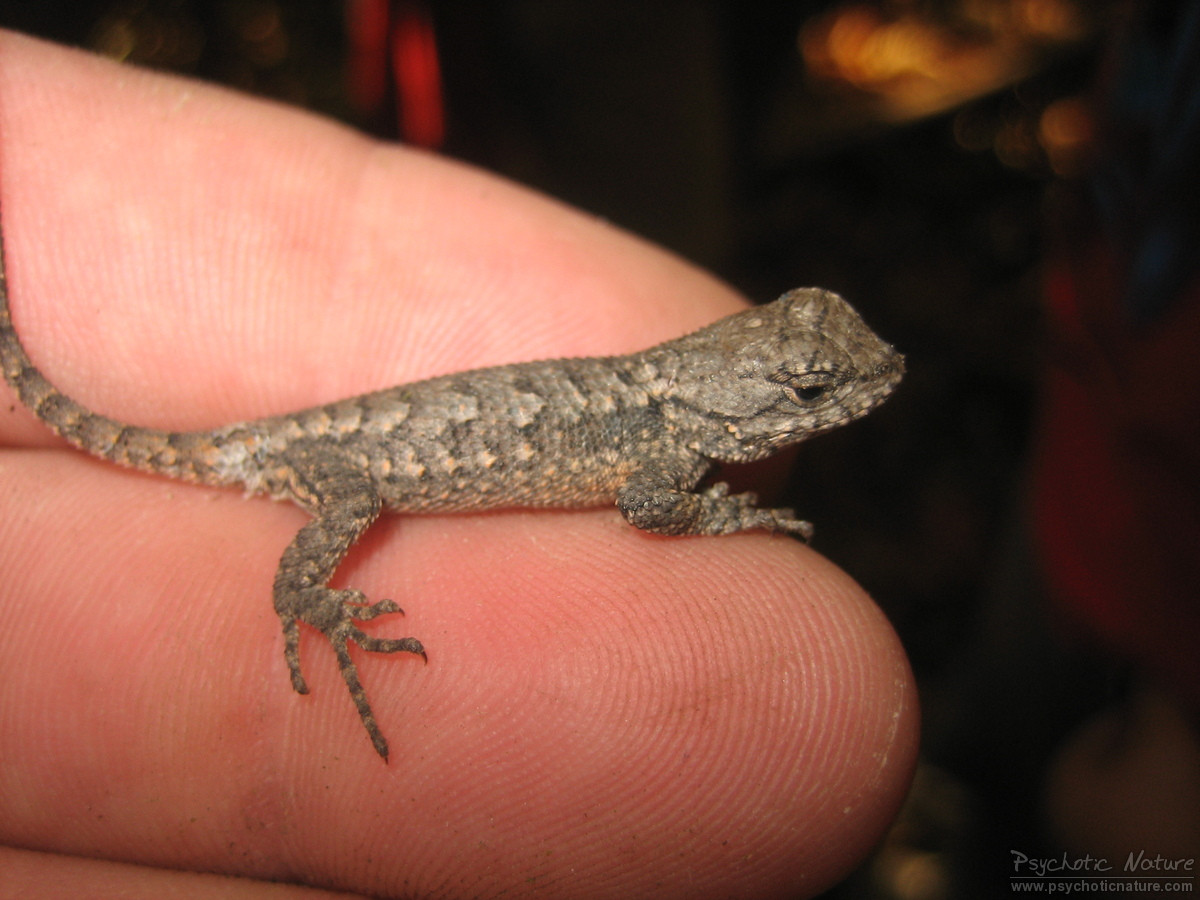Wonders of Wildlife: Fence Lizard
Fence Lizard
Other common names: Eastern Fence Lizard, Plateau Lizard, Prairie Lizard
Scientific Name: Sceloporus undulatus
Found in Alabama: Statewide
Diet: Carnivore (eats animals)
|
|
Fence lizard basking on a rock
Dreamstime
Click on image to enlarge it |
Learn more about...
| CLASSIFICATION |
|
What type of animal am I?
- I am a vertebrate (an animal with a spine or backbone).
- I am cold-blooded, so I cannot control my body temperature.
- I have scales on the outside of my body.
- I breathe with lungs just like you.
- I have 4 legs.
|
Scientists use basic traits to group animals into different taxonomic classes.
For a taxonomic classification chart comparing key traits of common backyard wildlife,
CLICK HERE! |
|
| The Fence Lizard is a REPTILE! |
| |
|
Size: |
- Range from 3.5-7.5 inches in length
|
Key Characteristics: |
- Fence lizards are gray, brown, or black with rough scales
- Males and females are similar in size
- Females can have horizontal black stripes on their back
- Males have bright blue scales on their neck and belly during breeding season
|
| Juveniles (young): |
- Young fence lizards look like smaller versions of adults
|
Male |
Females |
- Blue patches on neck and belly
|
- Horizontal black stripes on back
|
Male Fence Lizard
© Judy Gallagher
Click on image to enlarge it
|
Female Fence Lizard
Flickr - Judy Gallagher
Click on image to enlarge it
|
| ADAPTATIONS |
| |
| PHYSICAL ADAPTATIONS |
| |
| Fence lizards can survive without their tails: |
- Fence lizards, as well as many other lizards, can survive without their tail.
- If confronted by a predator (animal that eats them), they can easily disconnect a portion of the tail or the entire tail.
- This segment of the tail may continue to move even after being disconnected. This can confuse the predator and allow the lizard to escape.
- The lizard will regrow its tail, although it may not be as long as the original tail.
|
| |
| Fence Lizards have adaptations to help them avoid predators: |
- Fence lizards have a variety of adaptations that help them avoid being eaten by predators.
- Their coloration provides camouflage, which helps them blend in with their surroundings, so that predators have a more difficlut time seeing them.
- Fence lizards are fairly quick and will run away toward trees or cover like rocks and fallen logs when threatened.
- They are good climbers and can walk up and down on vertical surfaces. They use this ability to climb trees when threatened.
|
Fence Lizards have camouflage that helps them blend in with rocks and tree bark
Dreamstime
Click on image to enlarge it |
| |
| BEHAVIORAL ADAPTATIONS |
| |
| Fence Lizards are diurnal: |
- They are active during the day (diurnal).
|
| |
| Fence Lizards are Territorial: |
- During the breeding season, male fence lizards establish and protect their territory (specific area that they live in).
- They warn other males away and attract females by bobbing their head, doing pushups with their front legs, and showing off the blue patches on their neck and belly.
- If a rival male is not deterred by the display, male fence lizards will fight each other.
|
Fence lizards basking
Virginia Herpetological Society - John White
Click on image to enlarge it |
| |
|
| Fence Lizards Hibernate: |
|
- Fence lizards are cold-blooded, so they have less energy and move slower in winter when temperatures are cold and they can't keep themselves warm easily.
- They find crevices in fallen logs or rocks where they can hibernate (a state of reduced activity and energy) in winter when food is scarce.
- Sometimes if there is a warm day in winter, fence lizards will emerge (appear) from their hiding spot and bask in a sunny spot to warm up.
|
| LIFE CYCLE |
| |
|
|
| Life Cycle Stages of the Fence Lizard |
| |
|
|
Nest: |
- Eggs are deposited under 2-6 inches of soil or under rotting logs.
|
Female fence lizard leaving burrow (left),
and burrow with eggs (right)
© Brittany Young
Click on image to enlarge it |
| |
|
Eggs: |
- Female fence lizards lay 3-16 eggs in late spring or summer. Older females can lay 2-4 clutches of eggs in one season.
|
| |
|
Juvenile fence lizard
© Don Becker
Click on image to enlarge it |
| Young: |
- The female does not stick around to care for the eggs
- Young are independent and can hunt for themselves when they hatch from the eggs.
|
| |
|
Life Span: |
- Fence lizards usually live around 4 years.
|
| NATURAL Habitat Needs |
ADULTS |
YOUNG |
| Food |
- Feed on invertebrates (animals without a spine or backbone)
- Will eat earthworms, spiders, crickets, grasshoppers, beetles, and snails.
|
| Water |
- Mostly hydrate (consume water) through the animals they eat as food.
|
| Shelter |
- Live in dry, open pine and hardwood woodlands.
- Can be found on, near, or under trees, logs, rocks, and other forest debris.
- Often avoid wet or very shaded areas.
|
| Places to Raise Young |
- Females lay their eggs in burrows under 2-6 inches of soil or under rotting logs
|
|
BACKYARD
Habitat Needs |
ADULTS |
YOUNG |
| Food |
- Plant native grasses, shrubs, and trees that support invertebrates (animals that do not have a spine or backbone).
- Do not spray pesticides that might harm insect populations.
- Do not remove rocks or rotting stumps where invertebrates may be found.
|
| Water |
- Mostly hydrate (consume water) through the animals they eat as food.
- Do not remove moist, decaying logs or other debris where invertebrates may be hiding.
|
| Shelter |
- Provide a mix of shady and sunny areas.
- Provide rocks in sunny areas where they can bask in the sun.
- Do not remove rocks, rotting logs, or other natural debris.
|
| Places to Raise Young |
- Do not remove fallen logs where thy can lay their eggs.
|
|
| ECOLOGICAL ROLE |
| |
|
| Animals play an important ecological role in the health of habitats and ecosystems. |
| |
|
|
Food Source:
|
- Fence lizards provide a food source for many snakes, birds, and small mammals.
|
| |
|
Insect Control: |
- Fence lizards eat a lot of insects which helps control the insect populations and reduce the number of insect pests, including mosquitoes.
|
INFORMATION SOURCES FOR THIS SPECIES
.
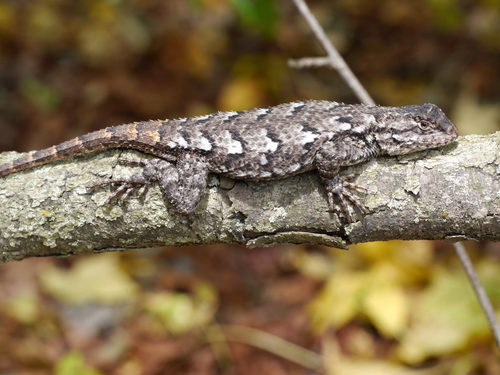
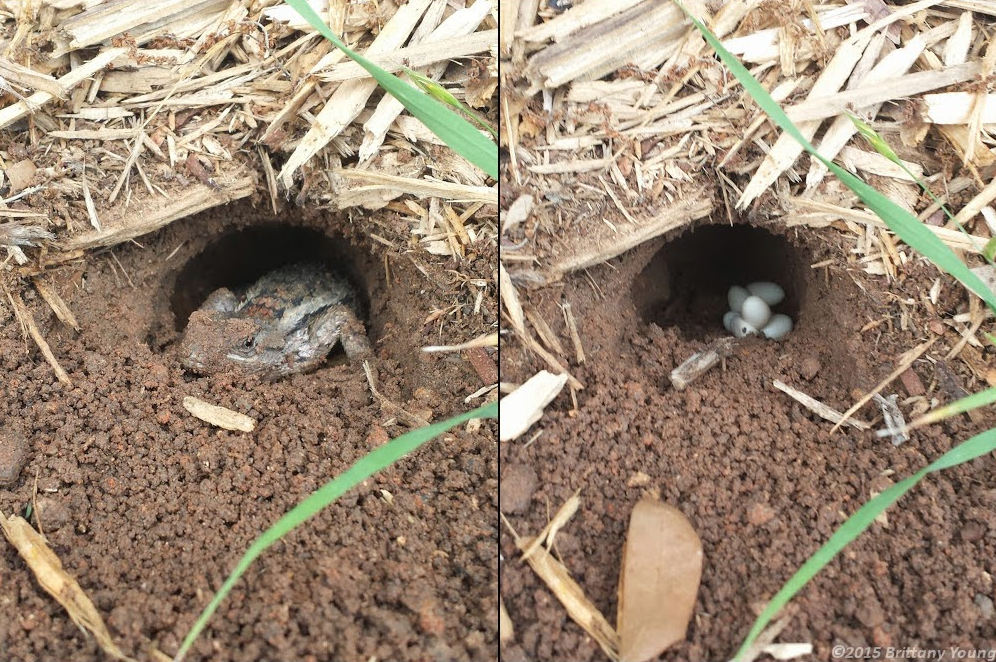




 Wildlife Tag
Wildlife Tag
